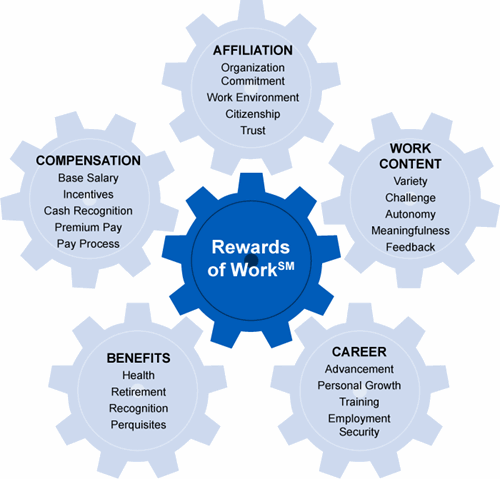In the world of business, we’re often focused on our customer value proposition. What makes our products or services stand out in the marketplace? How do we draw the right customers at the right price?
The unfortunate thing, however, is that we often neglect to pay attention to the most important stakeholders in our organisation.
Namely, our employees.
Defining Employee Value Proposition
With a shrinking talent pool and a tight labour market, organisations need to focus on what they bring to the table to attract, retain and motivate their staff. A good way to do this is to focus on enhancing their Employee Value Proposition.
The employee value proposition is defined by Brett Minchington (2005) as follows (source: Wikipedia):
“…a set of associations and offerings provided by an organisation in return for the skills, capabilities and experiences an employee brings to the organisation.”
It is critical that one’s employee value proposition is truthfully communicated to prospective employees at every step of the way.
Trying to rope in a “star catch” or a potential “high potential” (hipo) candidate may sometimes result in companies over promising – and under delivering on their end of the deal. This failure to meet expectations is a key reason why so many organisations have difficulties keeping their “A” grade staff.
An organisation’s employee value proposition can be understood in two ways:
- The employer brand;
- The rewards offered to employees.
Developing an Employer Brand
To be able to offer a compelling value proposition to current and future employees, an organisation should consider its Employer Brand and how these are communicated to employees both before they sign on the dotted line and after they are hired.
Quoting from Wikipedia, an employer brand can be understood as the…
“sum of a company’s efforts to communicate to existing and prospective staff what makes it a desirable place to work, and the active management of a company’s image as seen through the eyes of its associates and potential hires.”
While the organisation’s employer brand should be coherent with its public brand identity, special consideration is needed from the perspective of prospective and current hires. Key elements here include:
- Raison d’etre: What is the purpose of the organisation (ie, the “Why” behind the organisation)? How is this articulated and more importantly practiced through its vision, mission and values?
- Company culture: How are things being done in the organisation? What are its beliefs, values and norms?
- Environment: What is the organisational climate of the organisation like? Is it formal and process-oriented or casual and chaotic?
- Ethics: What are the ethics of the organisation like? How does it treat others?
- Incentives: What are the employee incentives available? How are these aligned to the corporate goals? (more below)
Employee rewards – tangible and intangible
To ensure that they can offer the right employee value proposition and project the right employer brand to prospective hires, companies should also look at the comprehensive package that it can offer to team members.
To do so in a holistic and well-considered manner, Sibson Consulting’s framework for total rewards may be useful as a point of reference as seen below:

Courtesy of Sibson Consulting
While most organisations focus on the Compensation and Benefits which a new or seasoned hire would enjoy working with them, they often place less emphasis on developing the other three dimensions of Work Content, Career and Affiliation.
This isn’t unexpected. Doing so requires extensive effort to map out the growth trajectories of every employee, match individual aspiration with organisational needs, and build a positive organisational culture.
To succeed, however, organisations must embrace a more holistic approach to employee attraction, retention and motivation.
They need to develop a strong set of vision, mission and values which steer and guide all employees towards a common direction. This should be aligned with a climate of collaboration, camaraderie and trust.
They need to also look individually at the content of the work for each and every team member. How is the variety, challenge, and meaningfulness of her work like? Can she find fulfillment, joy and meaning in the work she does?
They need to also look at the various rewards and incentives which an employee brings home. Is there scope for advancement and progression? Are there any forms of profit sharing or other rewards to motivate employees?
A holistic approach to HR
Building a robust organisation doesn’t end with hiring the right people for the right jobs.
It comes with ensuring that these individuals grow along with the organisation. It also comes with understanding the various social and psychological triggers that can motivate or demotivate one’s workforce.
Employees are not just headcounts – they are passionate individuals with views, thoughts and feelings. By paying attention to their Employee Value Proposition, organisations can greatly increase their chances of winning in the race for the brightest and the best.
As legendary business leader Jack Welch has shared: “The team with the best players wins.”


What a great article, this is very educative. Thanks for the information and for sharing it. Excellent blog.
So much to learn from this post. Great thanks for sharing this. Really appreciate it.